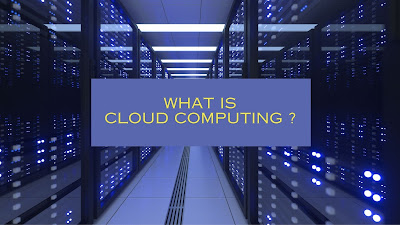The world of technology has undergone a significant shift with the advent of cloud computing. But what is cloud computing, and how does it impact our daily lives? In this article, we'll demystify the concept of cloud computing and explore real-world examples that showcase its transformative power.
Cloud computing is a revolutionary paradigm that delivers computing services over the internet, eliminating the need for local infrastructure. Instead of relying on physical servers or personal computers, users can access a wide array of services remotely, fostering a dynamic and scalable approach to computing.
Imagine cloud computing as a utility service, much like electricity. You don't need to generate your own power; you simply plug into the grid and consume what you need. Similarly, cloud computing provides on-demand access to computing resources without the hassle of managing hardware and infrastructure.
Key Components and Examples:
1. Infrastructure as a Service (IaaS):
Example: Amazon Web Services (AWS)
IaaS allows users to rent virtualized computing resources like virtual machines, storage, and networking infrastructure. AWS, a leading cloud provider, offers services such as Amazon EC2 for scalable computing power and Amazon S3 for storage.
2. Platform as a Service (PaaS):
Example: Heroku
PaaS provides a platform for developers to build, deploy, and manage applications without worrying about the underlying infrastructure. Heroku simplifies the development process by handling deployment and scaling automatically.
3. Software as a Service (SaaS):
Example: Google Workspace
SaaS delivers software applications over the internet, eliminating the need for local installations. Google Workspace offers cloud-based collaboration tools like Gmail, Google Docs, and Google Drive.
4. Function as a Service (FaaS):
Example: AWS Lambda
FaaS, or serverless computing, enables developers to run individual functions in response to events. AWS Lambda allows developers to execute code in response to specific triggers without managing servers.
5. Storage as a Service:
Example: Microsoft Azure Blob Storage
Cloud storage services allow users to store and retrieve data over the internet. Azure Blob Storage provides scalable and secure object storage for various types of data.
Everyday Applications:
1. Business Operations:
Cloud computing enhances business agility by providing scalable resources, allowing companies to adapt quickly to changing demands.
2. Personal Productivity:
SaaS applications like Microsoft 365 and Google Workspace enable individuals to collaborate seamlessly on documents and projects from different locations.
3. Entertainment Streaming:
Services like Netflix and Spotify leverage cloud computing to deliver on-demand streaming of movies, music, and other media.
4. E-Commerce:
Online retailers use cloud services for scalable infrastructure during peak shopping seasons, ensuring a seamless shopping experience for customers.
Conclusion:
In a world where digital transformation is the norm, cloud computing stands as a pillar of innovation. The real-world examples highlighted here demonstrate its versatility and impact across various industries. As we continue to embrace the cloud, understanding its fundamental concepts empowers us to navigate the digital landscape with confidence and efficiency.

0 Comments
If you have any doubts, Please let me know